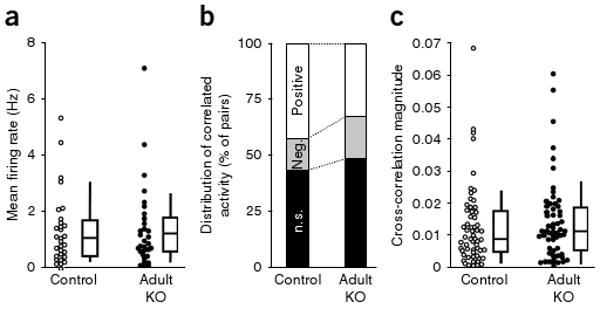Figure 7.

Adult NR1 deletion did not alter firing rate or synchronous firing of cortical excitatory neurons. (a) We found no difference in the mean firing rates of putative pyramidal neurons from S1 between 25–28-week-old controls (n = 2 for Cre (Ppp1r2-cre+/−), n = 2 for Flox-B (NR1loxP/loxP-line B)) and adult knockout mutants (Ppp1r2-cre+/−; NR1loxP/loxP-line B, (n = 4) during exploration of an unfamiliar linear track. Each dot represents the mean firing rate of an individual neuron (n = 31 for control, n = 33 for mutant). Mann-Whitney U test, P = 0.87. (b) Synchronized activity of pairs of nearby neurons from the recording shown in a. No difference was observed in the distribution of cross-correlation patterns between adult knockout mutants and age-matched controls (χ2 test, P = 0.24). (c) There was no difference in the magnitude of cross-correlations across all pairs between groups (Mann-Whitney U test, P = 0.32). Box plots depict medians (box centers), interquartile ranges (box boundaries) and 10–90th percentiles (whiskers). Each dot represents an individual pair.
